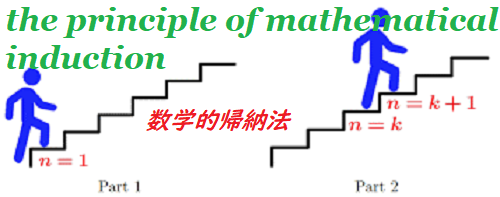
私が若かった時、数学は数と量の学問、あるいは(alternatively 別の言い方では)数と計量の学問である、と言われた(教えられた)。しかしこの定義はあまりにも狭すぎる。第一に、伝統的な数学において扱われている多種多様の数は、数学的方法の適用しうる領域の小部分のみを占めており、算術の基礎を確立するために必要な推論の非常に多くは、数とは密接な関連を全く持っていない。第二に、算術とその基礎づけ( its prolegomena 算術を基礎づける理論)を扱うとき、有限集合や有限数及び無限集合や無限数について等しく真なる命題が、単に有限な集合についてのみ証明されるということがないようにすることができる場合はいつでもそうすることを、我々(ラッセルとホワイトヘッド)心に留めておかなければならなかった(訳注:みすず書房版の野田訳では、「finite and of infinite classes or numbers」の「or」を無視したのか、「数の有限な集合についても無限の集合にも」と訳されている。数だけを扱っているのではない、とラッセルははっきり言っているのに・・・!)。もっと一般的に言えば、諸事例のなかのある特殊な集合において命題を証明することは -その命題をさらに一般的に証明することが可能な場合にはー 時間の浪費である,と我々は考えた。第三に、我々は、算術の伝統的な形式的諸法則を確立すること(訳注:算術を論理的に基礎付けること)を、我々が目指す目標の一部と考えた。即ち、以下の通り。 「結合法則」 (a + b) + c = a + (b + c) 「交換法則(可換法則)」 (a + b) = (b + a) (乗法についての同様な法則も加える)(訳注:a x b = b x a) 「分配法則」 a x (b + c) = (a x b) + (a x c) 数学の初学者は、常に、これらの法則を証明を与えられずに教えられるか、あるいは、もし証明が与えられる場合でも(if = even if)、その証明は数学的帰納法を用いており、従って、有限数についてのみ妥当である(数が有限の場合のみ妥当)。加法(足し算)や乗法(掛け算)の通常の定義は、加えられる項(sumands)の数や、掛け合わされる項(factors 因数)の数が、有限であることを前提している。これは、我々が除去しようとした制限のひとつ(among the limitations)である。
Chapter 8 Principia Mathematica: Mathematical Aspects, n.8 When I was young, I was told that mathematics is the science of number and quantity, or, alternatively, of number and measure. This definition is far too narrow. First: the many different kinds of number that are dealt with in conventional mathematics make only a small part of the region to which mathematical methods are applicable, and a great deal of the reasoning required for establishing the foundations of arithmetic has no very close connection with number. Second: in dealing with arithmetic and its prolegomena we had to bear in mind that wherever possible propositions which are true equally of finite and of infinite classes or numbers should not be proved only for the former. More generally, we considered it a waste of time to prove propositions in some particular class of cases when they can just as well be proved much more generally. Third: we considered it as part of the goal at which we were aiming to establish the traditional formal laws of arithmetic, i.e.: the associative law, (a + b) + c = a + (b + c) the commutative law, a + b = b + a with analogous laws for multiplication and the distributive law a x (b + c) = (a x b) + (a x c) Beginners in mathematics are always informed of these laws without being given proofs of them, or, if proofs are offered, they use mathematical induction and are therefore only valid for finite numbers. The ordinary definitions of addition and multiplication assume that the number of sumands or factors is finite. This is among the limitations which we set ourselves to remove.
Source: My Philosophical Development, chap. 8:1959.
More info.:https://russell-j.com/beginner/BR_MPD_08-080.HTM
